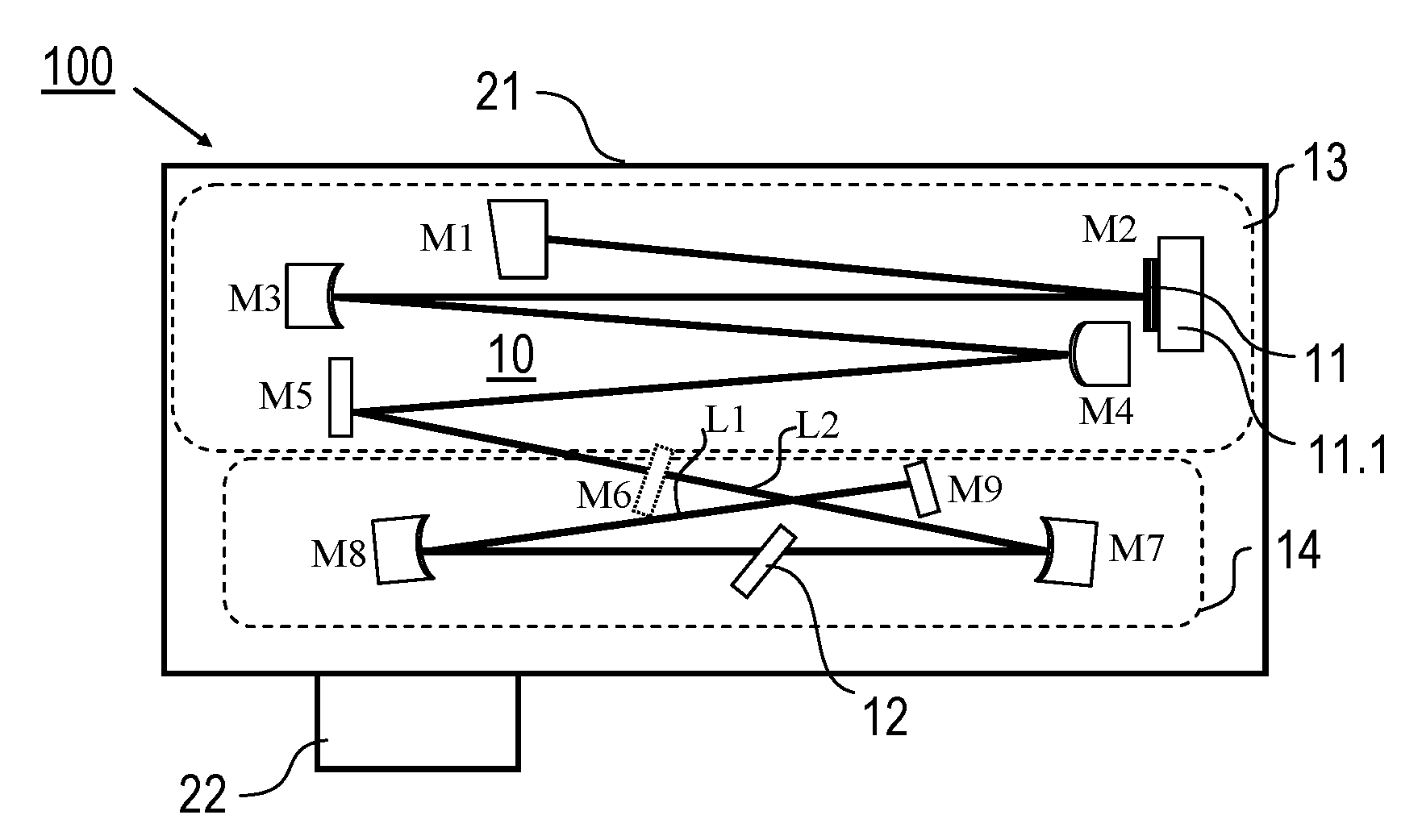Laser device with Kerr effect based mode-locking and operation thereof
a laser device and lens mode locking technology, applied in lasers, laser details, active medium materials, etc., can solve the problems of reduced gain bandwidth, reduced gain bandwidth, and reduced gain bandwidth of yb:yag thin disk lasers, and achieve compact resonator design and easy independent adjustment
- Summary
- Abstract
- Description
- Claims
- Application Information
AI Technical Summary
Benefits of technology
Problems solved by technology
Method used
Image
Examples
Embodiment Construction
[0068]Preferred embodiments of the invention are described in the following with particular reference to the design of the laser resonator, in particular the first and second mode shaping sections. Details of the optical components of the laser resonator, in particular the design of the reflective mirrors, the gain disc medium, the Kerr medium, a hard aperture and the optional SESAM are not described as far as they can be implemented as in conventional techniques. In particular, the techniques of pumping the gain disc medium are not described as they are known as such in prior art (see e.g. [1]). It is emphasized that the implementation of the invention is not restricted to the illustrated resonator geometries, but rather possible with any other types of laser resonators including at least one gain disc medium.
[0069]FIG. 1 illustrates a first embodiment of an inventive laser device 100 with a laser resonator 10 including multiple resonator mirrors M1-M5 and M7-M9, wherein the mirror...
PUM
 Login to View More
Login to View More Abstract
Description
Claims
Application Information
 Login to View More
Login to View More - R&D
- Intellectual Property
- Life Sciences
- Materials
- Tech Scout
- Unparalleled Data Quality
- Higher Quality Content
- 60% Fewer Hallucinations
Browse by: Latest US Patents, China's latest patents, Technical Efficacy Thesaurus, Application Domain, Technology Topic, Popular Technical Reports.
© 2025 PatSnap. All rights reserved.Legal|Privacy policy|Modern Slavery Act Transparency Statement|Sitemap|About US| Contact US: help@patsnap.com



